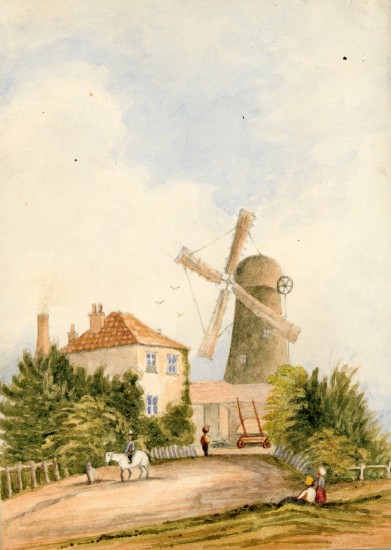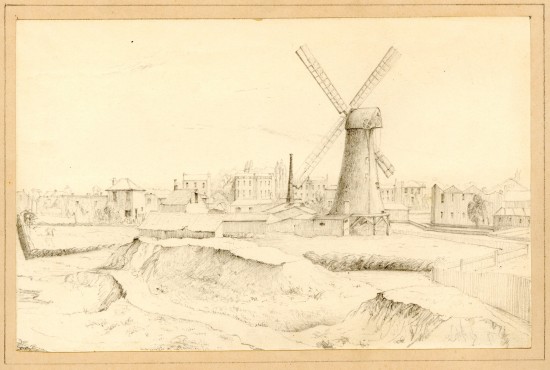Living “next door” are Samuel Sholl, widow and master baker, and Sarah Ashby, daughter of John and Hannah. Sarah, aged 46, is listed as unmarried, a visitor, and a miller’s daughter. We know that she later married Samuel, who was her brother-in-law – her sister Hannah, Samuel’s first wife, having died some time before 1851. Interestingly, another of John Ashby’s children, his second youngest son Amos, then the miller at Warlingham Mill, had also married into the Sholl family, to Samuel’s sister Rebeckah.
A second family is also listed as “living next door” to the Mill House. The head of this household is Jonathon Lutchford [sic]. With him are his wife Elizabeth and seven children: four sons and three daughters, aged from six months to 19 years. The oldest boy, William, and his father are also described as millers. It is unclear whether there are two families living “next door” in Mill Cottage, or whether those listed with Samuel Sholl are living at the bakery, one of the cluster of buildings on the property described in John’s will of 1845 as “…that built corn mill and 2 messuages or tenements and other premises now standing…”.
At this time, some of the open fields around the Ashby land were used for agriculture, but others had traditionally been used to produce material for local brick works. However, increasingly in the first half of the 19th century some of these fields were being leased for house building, which realised a much quicker profit.
Indeed, two years before he died in 1845, John Ashby agreed to let the eastern half of his property to a local builder, John Muggeridge of Brixton Road. Seven houses fronting Cornwall Road were erected on that piece of land, adding to the growing number of buildings along Brixton Hill and the surrounding streets.



